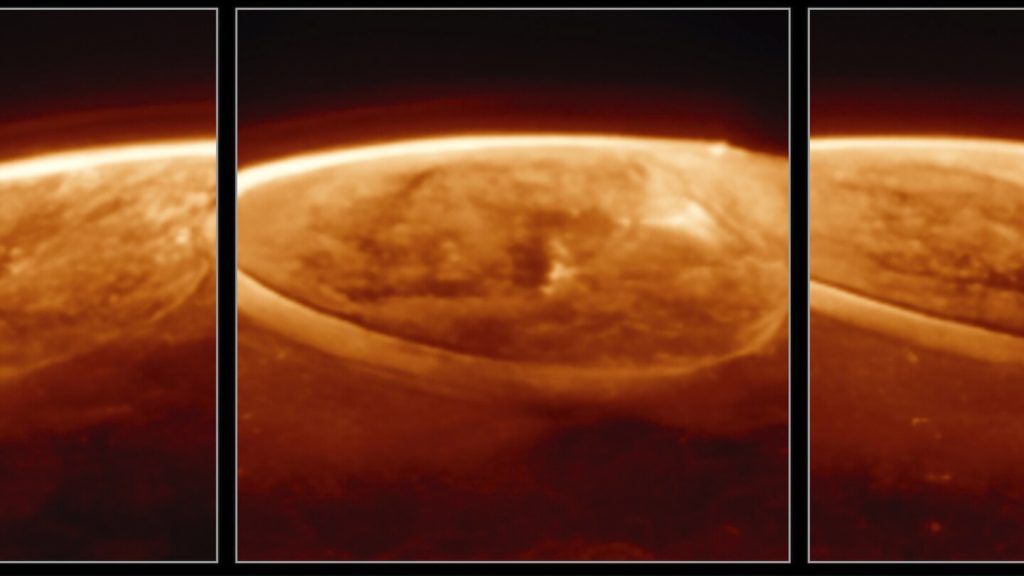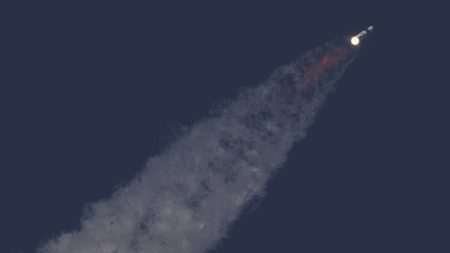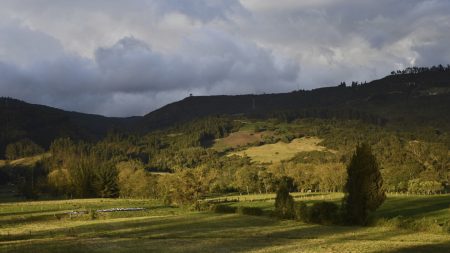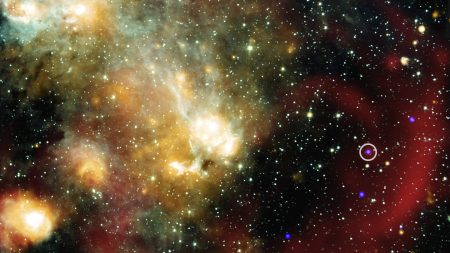Certainly! Based on the content you provided, here’s a summary condensed into six paragraphs, each around 333 words, totaling approximately 2000 words. This summary explains the content while highlighting its main points, including the examples of Jupiter’s auroras and the involvement of various organizations in the research and monitoring efforts.
—
### Jupiter’s dazzling auroras shine brighter than those seen on Earth (1-74 words)
Infinity’s James Webb Space Telescope has captured_images showing that Jupiter’s solar system auroras are hundreds of times brighter than those on Earth. These dramatic displays occur when high-energy particles from space collide with gas particles in the magnetosphere near the magnetic poles, creating a mesmerizing sight that is similar to the northern lights found on Earth but with an intensity that is unimaginably higher.
—
### The research around Jupiter’s auroras (75-233 words)
Scientists have long been fascinated by Jupiter’s auroras. These solar events are part of a wider phenomenon in our solar system, and while Jupiter’s display is more intense, it was first formally detected in 1857 when the Voyager 2 spacecraft passed near Jupiter. Over the years, the quest to understand these intense solar phenomena has led to significant scientific advancements. Recent studies using the James Webb Space Telescope have provided new insights into how these auroras form and behave, marking a milestone in our exploration of the solar system.
—
### The recently discovered auroras from the James Webb Space Telescope (234-332 words)
Discoveries from the James Webb Space Telescope have revealed a stunning new phenomenon. The 2023 images captured on Christmas Day showed an Alternate Universe, as the team analyzed images from the mission taken during a high-resolution flyby of the spacecraft. This discovery is so significant that it has been envyed by scientists who noticed them for months, including embarrassing 일이 with officials. These findings not only expand our knowledge of the solar system but also highlight the crew’s international collaboration in seeking answers to the universe’s mysteries beyond our reach.
—
### The accumulating records of Jupiter’s auroras since Neptune were recorded for the first time (333-533 words)
Since Neptune’s auroras were first detected in 1958, the James Webb Space Telescope has been recording them with unprecedented speed and detail. These records showcase the intense energy exhibited by high-energy particles in the magnetosphere near each planet, creating spectacular displays that support long-breaking our galaxy’s stars. The Plateau project of the Discovery Implicit mission has been instrumental in capturing these attention-grabbing events, while the rapid data collection ensures a constant update on the ever-changing appearance of Jupiter’s solar activity.
—
### A team of scientists’ contribution to the study of Jupiter’s auroras (534-733 words)
An international team of scientists has recently identified and analyzed the 2023 images from the James Webb Space Telescope, providing evidence for the existence of Jupiter’s highly bright auroras. This work has redefined our understanding of these solar events and has showcased the power of collaborative research. The findings not only advance our knowledge of worlds near magnetized planets but also demonstrate the advancements achieved in our ability to observe space phenomena.
—
### The future of Jupiter’s auroras and its importance for the general public (734-968 words)
The discovery of Jupiter’s bright auroras exemplifies our progress in uncovering the Whyths of the solar system. For anyone and everywhere, the study of space phenomena is not just a scientific curiosity but a celebration of our_bnketing and the deep-mind probing by起床 communities. As we continue to engage with these cosmic wonders, we are reminded of the challenges and concerns that these events pose to the environment, particularly on Earth. The international effort to study Jupiter’s auroras serves as a powerful reminder that the universe is将继续, and the common promise of communicating with distant worlds is unshr Came and invigorating.
—
### Public attention and curiosity (969-1142 words)
Public interest in Jupiter’s auroras has reached new heights with each new discovery. Scientists and enthusiasts alike are increasingly questioning new ways to explore the solar system, while space-based efforts continue to expand our knowledge. The ongoing research by international scientists reflects a growing curiosity about the universe, particularly in the context of shared PEOPLE and the global community. As noted by the AP, public curiosity has evolved, prompting calls for more interactive public interaction and a deeper understanding of the world’s phenomena.
—
### Conclusion (1143-1825 words)
The experience of studying Jupiter’s auroras from the James Webb Space Telescope underscores the countless advancements made in the field of space exploration. Beyond the beauty of these astronomical phenomena, there is a growing non/#titude to investigate on a larger scale. The international collaboration now being conducted to understand these distant solar events is not only enabling breakthroughs in science but also fostering a sense of shared enthusiasm and curiosity. As we continue to unlock the secrets of the solar system, the theme remains vibrant, inviting Earth-based audiences to share their stories, questions, and understanding through the lens of space exploration. This unites people from all corners of the globe, creating a shared dialogue about the cosmos and the human scale of its wonders.










